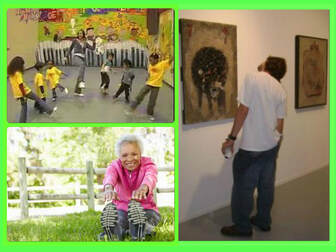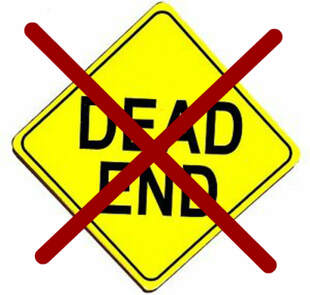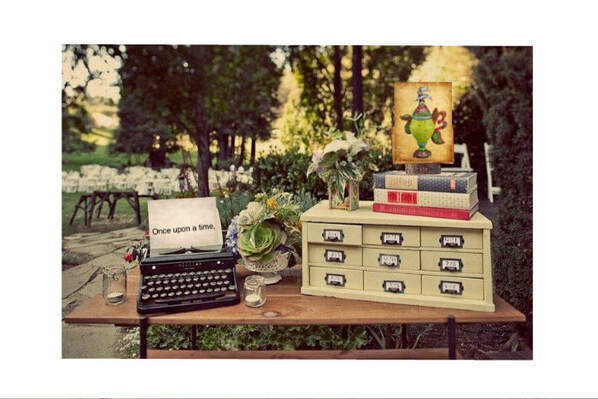 If I were to venture a guess, I’d say that everyone of us has, at one time or another, tried something or somethings at which we sucked. Discouraging, right? How often have you tried the same activity or skill more than once and still sucked? Do you then give up and move on? Maybe we’ve even attempted more than one thing at which we were awful. I know for myself, I tend to avoid those things at which I suck. You, too? Suppose there’s a sport, a musical endeavor,an artsy/craftsy project or anything that has always appealed to you. Maybe you wanted to really take on that activity. Then some insecurity or belief that you might fail and look foolish, stops you from trying. Let’s say that despite convincing yourself that it can’t be done, you still wish you could engage in that special dream. Here’s the big idea. What if we threw caution (and ego) to the wind, and went for that one thing we have longed to be able to do? Maybe we take that chance and continue to suck. Who ever said we had to be perfect or excel at all our endeavors? Is it not possible to enjoy participating in an activity with an on-going sub par performance? I’ll use myself as an example. I’ve been doing something regularly for the past few years. This activity is definitely not my forte. I keep doing it because it challenges me to get better. I know I will never be a Monet, a Hemingway, a Serena Williams and the like. I don’t have to be. I keep at it because it is fun and I am always learning something. Sucking at something and doing it anyway is just fine with me. Who knows? I just might improve along the way in spite of myself. One final point – we can learn a lot from children. Kids are always trying new things. Sometimes they perform well; other times not so much. Still, they are ready to jump in at a moment’s notice without a thought of whether they can or can’t. When they like the game, they will keep playing regardless of their skill level. They definitely have the corner on being able to have a good time. “If you never did you should. These things are fun, and fun is good. Dr.” Seuss Comments are welcomed.
0 Comments
 The study of early humans and our evolvement has shown that we were built to be walkers and runners. Our DNA and bodies were designed with the gift of movement. This movement allows life to be revealed from a different perspective. For example, in an art museum, patrons examining a painting from one spot move a few feet in order to observe art from a different angle. Music sounds different depending on where in the room we’re sitting. How we understand life depends on our perspective and that perspective changes when we move, even a few inches. Let’s take a deeper dive into perspective and movement. The starting point is that our reality is based on our perception. The above examples clearly illustrate some ways physical movement can affect how we perceive what’s before us. What about mental movement? Doesn’t that also affect our perception and what kind of action we take? When we get stuck in one mental position, one belief, one attitude, one mindset, one way of doing things, we greatly limit ourselves, our potential and what we could achieve. If we allow ourselves even one small shift in our thinking and beliefs, our perspective begins to open and broaden. That is a step into the realms of hope and infinite possibility. We must point out the mind/body connection. They are not separate entities. The mind and body are working together at all times. It is good to remember that our capacity to think and feel is supported in large part by the neural hardware and software that creates our ability to move and perceive. By developing one we develop the other. It's all connected. “Nothing happens unless something is moved.” Albert Einstein Comments are welcomed.  Raise your hand if you have ever evened a cake or pie. You know, after having a slice of cake or piece of pie, we contemplate seconds. As part of that contemplation we examine the cake or pie and notice it may have some rough edges. We might think to ourselves, “I would really like seconds, but it may ruin my diet, spike cholesterol or make me appear piggish and so on.” I know I look longingly at the cake, for example, noticing it doesn’t look quite right. I then might think, “Hmmm. If I just even some of those rough edges, I’ll get that little extra taste that I’m craving. That tiny bit of evening will not really add calories or clog my arteries.” I then pick up the tools of the trade, a knife and fork, to begin the very meticulous, punctilious, precise art of evening. The next step is to decide with which tool to begin. I start with the knife determining it will make a cleaner, less noticeable reconfiguration of the cake. I trimmed off a small area that was sticking out. That should do it. The extricated sliver hit the spot. As I was about to pack up my utensils, I suddenly notice the cake was a tad unbalanced. Oh no. I couldn’t leave an imperfect, asymmetrical cake. I had no choice. I began the process all over again and again and again. No doubt, you know what happened. All those nips and tucks, so to speak, equaled a second piece or more. I’m thinking more. Evening is one of those things that while you know how it is going to end, we will continue to do it anyway. This reminds me of an incident in a restaurant. True story. A friend was working in the kitchen. He was responsible for cutting the daily carrot cake. One day when the restaurant was especially busy, he was asked to go out and help with bussing. The dirty dishes kept piling up and no S. Finally, someone went back into the kitchen to find out why he hadn’t come out. There was S, with a knife and ruler measuring the pieces of carrot cake so that every slice was exactly the same size. Nothing like having an employee with a little OCD in his or her resume. There are two morals to this story: One: We ought to embrace wabi sabi, the Japanese philosophy of aesthetics which sees perfection in the imperfect. Two: People, like dessert, may be a little uneven or have some jagged edges. It’s that unevenness and jaggedy edges that make us interesting, unique, wonderful, fun and loveable. Comments are welcomed.  Sounds disgusting, right? Obviously, I am speaking metaphorically. Many of you may be familiar with eating the frog for breakfast as a strategy for getting things done. In case you aren’t familiar or want a refresher, it actually comes from an old saying, if you eat a live frog first thing in the morning, nothing worse will happen the rest of the day. A pretty safe assumption, I’d say. That frog has come to mean the most important or difficult thing that needs to get done. There are always some tasks we would like to tick off of our to-do list as soon as possible and that if accomplished would help us feel better, but are so unmotivating for any number of reasons, they keep getting put off. Selecting that one big, difficult task and getting it done first leaves us with plenty of energy to tackle many other to do’s. So they say. That’s the theory and that’s what I am always reminding myself when faced with a frog. What do I do? Well, I don’t eat frogs. I’m one of those exceptions. You see, I have an aversion to clutter or anything I define as clutter. That usually means a myriad of little things that need doing, but not critical in the moment. Along with this lesser list comes a frog. In my mind, I always think that if all of those lesser tasks were out of the way, I can really focus on the main thing. Every time a frog situation comes along, I go about Marie Kondo-ing the clutter so I can zone in on that one important item. I’d bet Brian Tracy and all those other frog eaters would be pulling their hair out reading my formula for getting stuff done. Seriously, it works for me and that’s what matters. There are two morals to this: One: It is important to be open to exploring different avenues. You never know when you might stumble upon a real gem. Two: Still, the bottom line is you just gotta do what works best for you. Comments are welcomed.  Mindset. Attitude. Belief. What do we tell ourselves when faced with things we consider challenging? “I’m not good at writing. I can’t paint. I don’t work well in a group. I have trouble speaking in front of others. I’m no good at cooking. I don’t participate in sports because I am not any good.” Sound familiar? Here’s the thing. When we think like that, we are imposing limits on potential. We assume that things can’t be any better or that we can be better. We may decide to avoid things in case we might fail or look foolish. It becomes difficult to appreciate other people’s successes when we think we will fall short. Sometimes we might even find some kind of pleasure in other people’s failures to boost our own esteem. Such thoughts are limiting beliefs that can turn into self-fulfilling prophecies. Despite what they say about assume, you know, that it makes an ass of u and me, let’s make some assumptions. One assumption might be that having such beliefs or mindsets about ourselves and what we can or cannot do, does not lead to happiness or truly flourishing. Another assumption might be that there’s no point in trying because it won’t make any difference. Still another assumption might be that it’s a matter of destiny so that’s that. Now let’s look at what is true and real. With one little tweak in our thought process; by finishing that thought with one little 3 letter word, everything changes. Here’s how it works. For example, let’s say , “I would really like to be a good cook, but every time I try a recipe, it flops. As much as I’d like to prepare a tasty meal or dessert, what’s the point?” Suppose we reframe that to, I’ll continue to work on those recipes. They just haven’t turned out great yet.” Another example is what prompted me to write this. I’d been getting so frustrated with my computer upgrades. Why do upgrades come with complications? The previous version was very simple and straight forward. Making progress was seemingly near impossible. As I was ruminating around with dead end thoughts, it suddenly occurred to me to say, “Okay. This has been mind-boggling but I just haven’t figured this stuff out yet.” Adding yet to the end of my reframe, made me feel free and hopeful. I felt that, yes, the computer changes have been daunting. Simply saying I haven’t figured them out yet, opened me up to the achievable. I knew that as long as I keep at it, I’ll be successful. Carol Dweck, famous for her work on fixed and growth mindsets, tells of the time she visited a high school program in Chicago. The students had to pass a number of classes to graduate. She noticed that some of their papers had written at the top of their exams, “not yet.” In this way, the students were not locked into failure. What this did was keep those students on a learning curve and gave them a path to the future. Buy using that little 3 letter word, we can avoid the “tyranny of now,” and open ourselves up to the universe of possibility. Comments are welcomed. |
Archives
July 2024
Categories
All
|

 RSS Feed
RSS Feed
